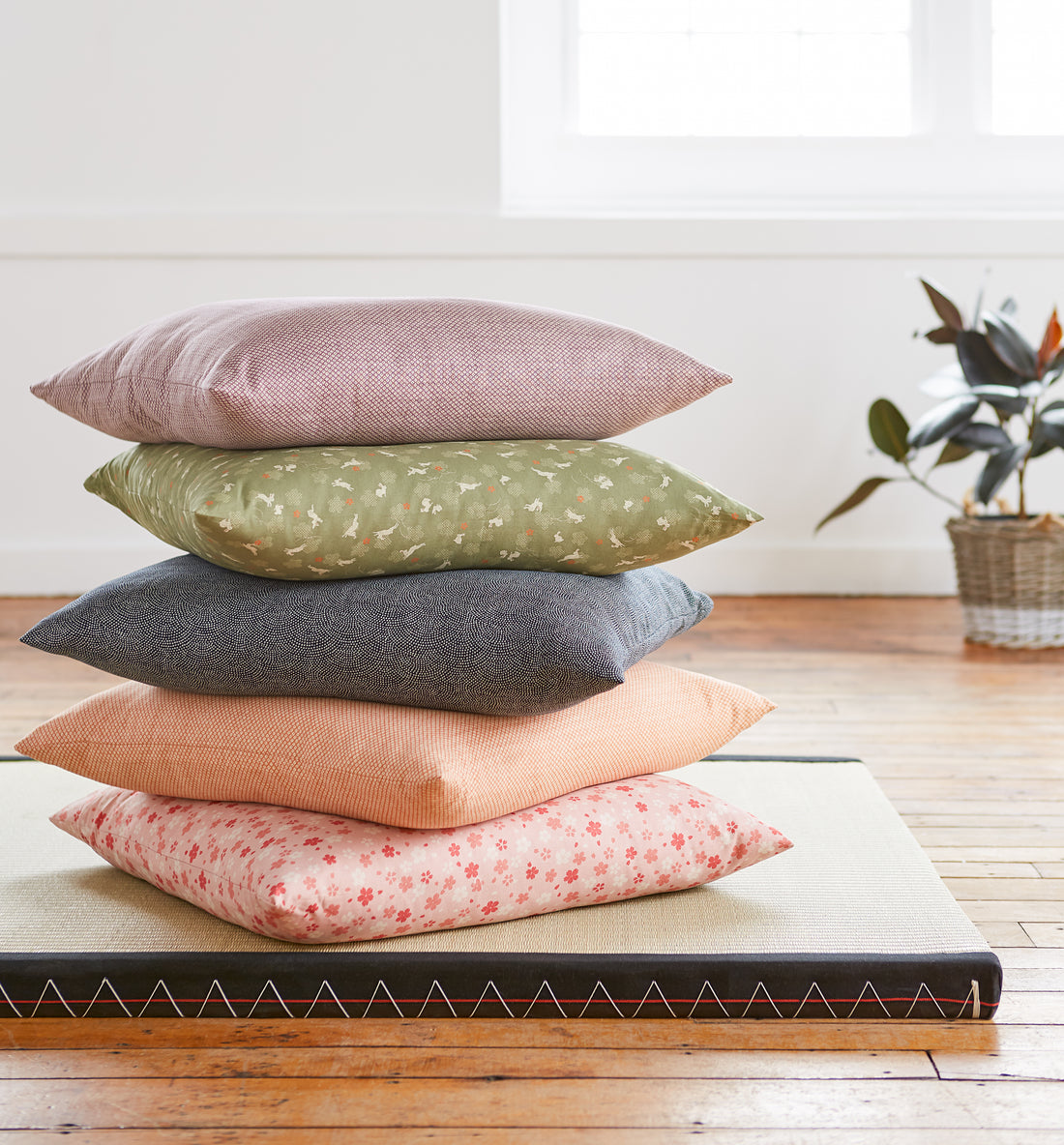Zabutons are the traditional cushions used in Japanese culture. Originally the zabuton was seen as a respectful symbol of power and was used to welcome guests into one’s home. They were first introduced during the Kamakura era and further developed during the Edo era. At that time they were primarily used by courtesans, but became more universal during the Taisho era. It is considered rude to step on a zabuton, you must first kneel down onto the cushion and then sit on one’s heels. This position is meant to symbolize respect and virtue.
Houses in Japan are typically much smaller than their western counterparts so most spaces are built to be multifunctional. Following the principles of Kanso everything in the house must be there for a purpose, zabutons are no different. They are typically used as floor cushions placed on tatami mats and can be easily stored away when not in use. In very casual settings the zabuton can be used with the zaisu, a Japanese legless chair.
Zabutons are not just used in the home. During Rakugo (traditional Japanese storytelling) performances, performers are not allowed to get up from their zabuton until the story is completely finished. Additionally, Sumo stadiums offer some tatami sitting around the ring. When you were frustrated at the result of a match you would throw your zabuton at the losing yokozuna. However due to the sometimes dangerous nature of this tradition it is mostly not allowed these days.




